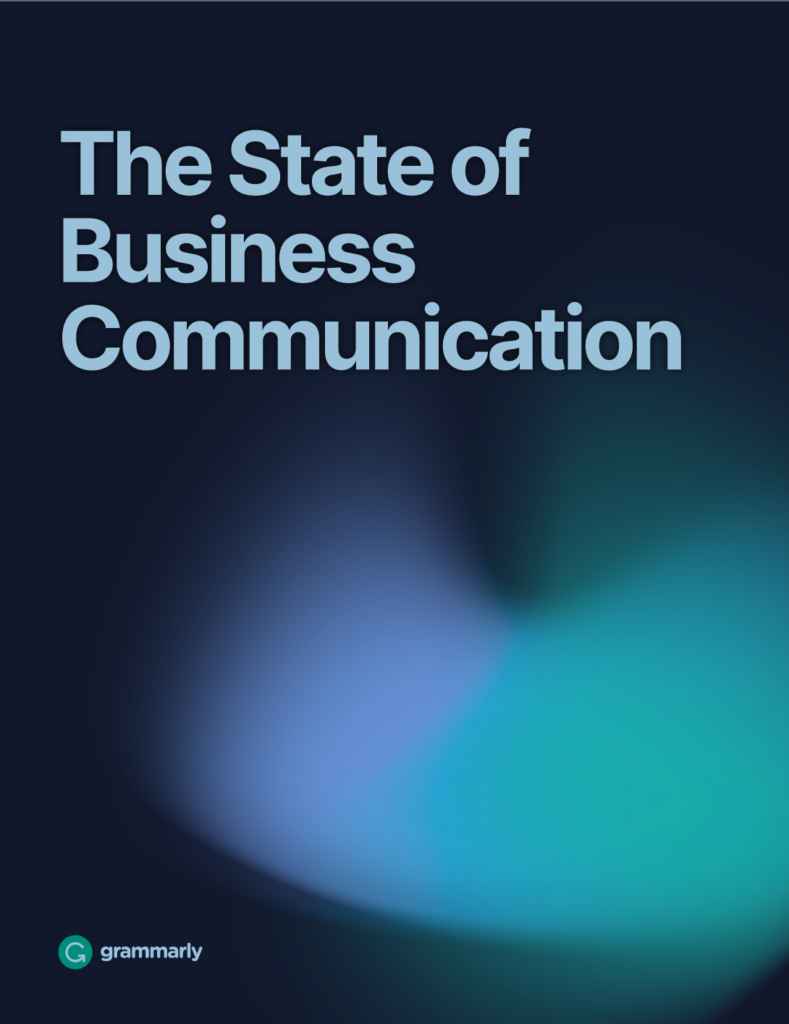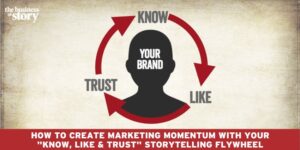How to use one storytelling framework to overcome common miscommunication challenges
Imagine that you have a growing company and you are particularly pleased with Sarah who joined your operations team during the height of the pandemic.
You believe that Sarah and your 11 other direct reports have worked well remotely. In fact, several of them had never met each other in person until recently when you hosted your first office meeting in over two years.
It felt good.
 But what you learned in that gathering alarmed, even saddened, you. Despite all of the communication protocols you orchestrated to help your hybrid team be productive, Sarah had one complaint that resonated with the others.
But what you learned in that gathering alarmed, even saddened, you. Despite all of the communication protocols you orchestrated to help your hybrid team be productive, Sarah had one complaint that resonated with the others.
“I get frustrated because while I enjoy working with this group the communication between us isn’t that great. I mean, everyone is professional and cares about each other, but we’re not very clear about what needs to happen with the projects at hand,” Sarah lamented.
Her insight about miscommunication isn’t surprising. A recent study by The Harris Poll and Grammarly about the state of business communication found that knowledge workers like Sarah lose seven-plus hours per week – basically one day per week – of productivity and profitability due to miscommunication.
Miscommunication is costing American businesses $1.2 trillion annually, according to the research.
In fact, 86% of the knowledge workers prioritize these six causes of miscommunication:
- Receiving timely responses from others.
- Communicating clearly so everyone understands their message.
- Understanding messages communicated by others.
- Keeping up with the frequency of communication.
- Identifying the proper tone to use in messaging.
- Choosing the right platform or tool for communication.
If boosting profitable productivity doesn’t motivate you to level up your team’s communication skills then consider this cost: One of the top reasons why knowledge workers are leaving their jobs at a record pace is because they feel disconnected from and disrespected by their leadership due to the lack of consistent and quality communication, according to a recent PEW Research Center study on the Great Resignation.
How to receive timely responses from others and avoid the dreaded ghost
Sarah commented in the group that the thing that drives her crazy is the lack of timely responses on projects. Or worse yet, being ghosted by some of her colleagues. She didn’t understand the ghosting because she felt like she had a good report with her teammates. But according to the Harvard Business Review, ghosting, which got popularized with dating apps when someone you were having a conversation with suddenly disappeared, is becoming dishearteningly prevalent in business regardless of how unprofessional it is.
Business people ghost for a number of reasons. At the top of the list is avoiding awkward conversations if they have to tell you “no”. They may be overly busy or have no update to share. So they go silent without the courtesy of a reply.
But why not just let the ghosting go?
Well, we’re not biologically wired for that. Sam George, author of I’ll Get Back to You, and I had a conversation about why we tell ourselves horror stories when we get ghosted on The Business of Story podcast.
When something is unresolved, our brains tend to obsess about it in what’s called the Zeigarnik effect. We must close the story loop, according to George. So we make up a story that is often a negative outcome because those fictions provide the most finite conclusion.
 That negativity tends to spiral downward in our psyche adding to the discomfort of not knowing for lack of response.
That negativity tends to spiral downward in our psyche adding to the discomfort of not knowing for lack of response.
Clearly communicating your request using something as simple as the ABT (and, but, therefore) narrative framework is often the answer. With the ABT you use the three forces of story – agreement, contradiction and consequence – that triggers the recipient’s cause-and-effect limbic brain to make them a more active participant in your communications.
You begin by validating their position on the particular subject you are needing answers about and why it’s important to them. Essentially, you are opening the story loop with what we call the “And Statement of Agreement.”
Then you build tension and curiosity in your story loop with your “But Statement of Contradiction” that defines the problem you are trying to solve and its impact on the person you are communicating with. This beckons them deeper into your correspondence setting up the problem/solution dynamic that will keep them intrigued in your conversation.
Finally, you close the story loop with your “Therefore Statement of Consequence.” This is your call-to-action specifically defining what you need your colleague to do next when and why.
As you’ll see, using the ABT will help you overcome the six root causes of miscommunication.
Communicating clearly so everyone understands messages sent and received
According to the report, 57% of knowledge workers use email as their preferred choice of communication. Do you fall in this category?
When I was an adjunct professor at Arizona State University teaching storytelling in the Executive Masters of Sustainability Leadership, one of master candidates, Russell Goldstein, who is now Senior Vice President, Private Client at Bank of America, shared with me how he uses the ABT in all of his emails. While it took longer at first to write the emails because he was focusing his energy on crafting ABTs to clearly and succinctly get his message across, he said the results were phenomenal including these three outcomes:
- The ABT cut the length of his emails by two-thirds, which got them read by colleagues overwhelmed by bursting inboxes.
- The requests he made relative to specific subjects were crystal clear in the first short paragraph, which made it easy for his colleagues to digest the information and act upon it.
- Teammates thanked him for simplifying his messages, which made Mr. Goldstein look pretty smart.
When you and your colleagues use the ABT in your communications for emails, texts, Slack, Teams or any other channels of written communication, you will overcome the second and third root causes of miscommunication in your company: Communicating clearly so that everyone understands your message and understanding messages communicated by others.
Cleaning up message clutter
According to Columbia Business School professor Sheena Iyengar, an expert on choice, the average knowledge worker processes the equivalent of 174 newspapers of information every day. So it’s not surprising that nearly one-third of survey respondents voiced their concerns about keeping up with the frequency of messages and choosing the right platform or tool for communication.
To their credit, the communications platform Slack recognizes the cacophony of communication challenges and prefers these five ways to overcome information overload in the workplace.
But the proven way I’ve found to clean up message clutter is to begin with a short, crystal clear message. That takes effort on your part to craft the communication so it takes little to no energy on the part of your audience to understand you.
Again, the problem/solution dynamic of the ABT is the foundation for all powerful and persuasive communications. Plus the framework is short and sweet, but it takes practice. The basic form is:
We want to accomplish X AND it’s important because of Y.
BUT we don’t currently have it because of Z.
THEREFORE, please do A so we can accomplish B that will get us to C…
Legendary Silicon Valley marketer Christopher Lochhead described the ABT like this on the Business of Story podcast.
To overcome costly miscommunication, teach your people the three proven narrative frameworks of the ABT (And, But, Therefore), the five primal elements of a short story for big impact, and the 10-step Story Cycle System™ to create persuasive presentations and compelling long-form communication.
The small investment will create huge dividends by turning miscommunication into masterful messaging that connects with audiences and converts them to action.
Just ask your version of Sarah what miscommunication is costing her.











